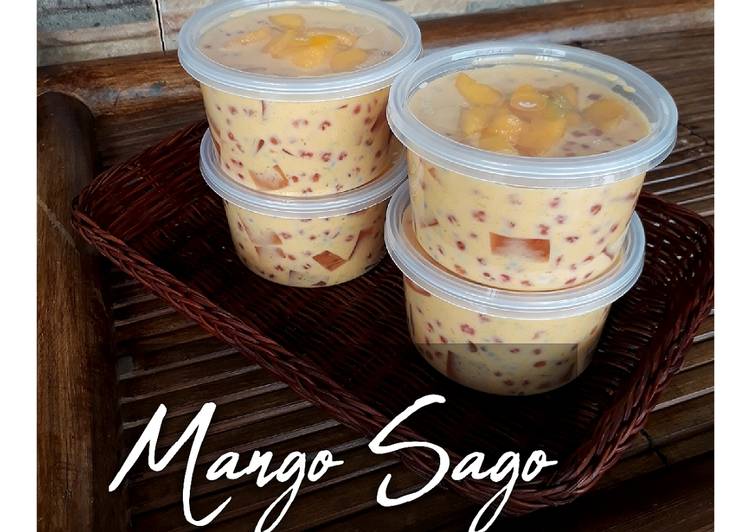Mango Sago. Mango Sago is a refreshing and satisfying summer dessert, with juicy chunks of mango and a mango/coconut milk tapioca pudding. The glug of heavenly condensed milk doesn't hurt either! This is another dessert copycat off the menu of famed Asian dessert chain, Honeymoon Dessert.

You can cook Mango Sago using 14 ingredients and 5 steps. Here is how you achieve that.
Ingredients of Mango Sago
- You need of Memasak sagu mutiara:.
- Prepare 100 gr of sagu mutiara.
- You need 1 lt of air.
- You need 2 sdm of gula pasir.
- It’s of Memasak jelly:.
- Prepare 2 bungkus of jelly rasa mangga ukuran 10 gr.
- It’s 800 ml of air.
- It’s 8 sdm of gula pasir.
- Prepare of Pelengkap:.
- You need 2 buah of mangga Harumanis.
- Prepare 1 sdm of selasih.
- Prepare 1 kaleng susu of evaporasi (405 gr).
- It’s 1/2 kaleng of skm.
- You need 1 buah of mangga, potong kotak.
Mango sago is also called yang zhi gan lu(楊枝甘露) in Chinese. Transfer half of the mango cubes to a bowl and set aside. Purée mixture until slightly thick; transfer to a mixing bowl. Sago pearls are simmered and mixed with mango and pomelo and topped with coconut cream in this dainty Asian dessert that is dairy free!
Mango Sago instructions
Masak sagu dengan air dan gula. Sampai matang dan bening..
Masak jelly, gula, air sampai mendidih. Tuang dalam wadah. Diamkan hingga set. Lalu potong dadu..
Blender 2 buah mangga sampai halus..
Rendam selasih dengan air matang. Biarkan sampai mengembang..
Campurkan semua bahan dalam wadah besar (sagu mutiara, selasih, jelly, jus mangga, susu evaporasi, skm), aduk rata. Pindahkan ke cup, saya pakai cup ukuran 300 ml. Dapat 9 cup. Beri topping potongan mangga. Simpan di kulkas sampai dingin. Lalu sajikan..
The result was a mango sago that tasted perfect and not too sweet. My family and I can't get enough of this delicious treat. Filipino mango sago is a delicious dessert consisting of tapioca pearls, mango bits, fresh milk & coconut milk. Mango Sago is a popular Asian dessert that is commonly found on menus of many restaurant and dessert stores in various Asian countries. It is said to have originated in Hong Kong but is usually accompanied by pomelo.